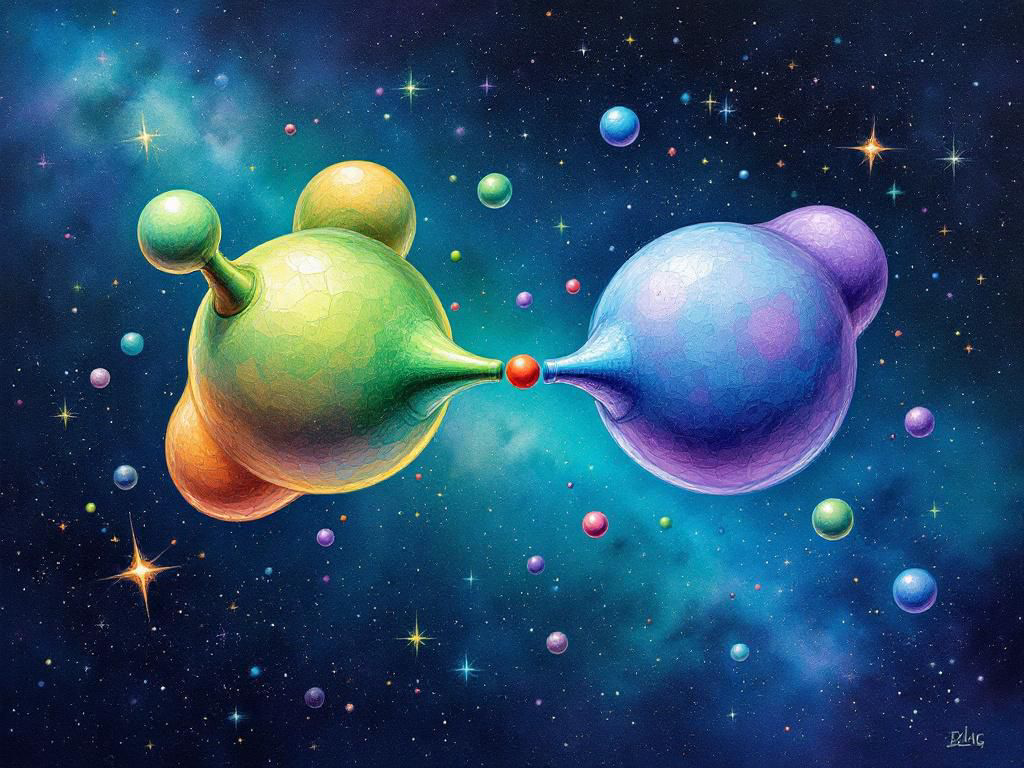📘 Unit 1: Introductory Quantum Mechanics – Study Material (Part 1)
🔶 1. Planck’s Radiation Law
🔹 Introduction
In the late 19th century, classical physics could not explain the nature of blackbody radiation. According to classical theory (Rayleigh-Jeans law), the energy radiated at short wavelengths (UV region) should be infinite—this problem is known as the Ultraviolet Catastrophe.
Max Planck, in 1900, proposed a new theory stating that energy is not continuous but quantized, meaning it exists in discrete packets called quanta.
🔹 Key Postulates by Planck
- Energy is emitted or absorbed in discrete packets:
E = nh\nu
= energy,
= integer (1, 2, 3...),
= Planck’s constant = J·s,
= frequency of radiation.
- Oscillators can only have energies that are multiples of .
🔹 Planck’s Radiation Formula
E(\nu, T) = \frac{8\pi h \nu^3}{c^3} \cdot \frac{1}{e^{\frac{h\nu}{kT}} - 1}
Where:
- = energy density at frequency and temperature
- = Planck’s constant
- = speed of light
- = Boltzmann constant = J/K
🔹 Importance of Planck’s Law
- Explained blackbody radiation curve.
- Marked the beginning of quantum theory.
- Accurate for all wavelengths, unlike classical theories.
🔹 Blackbody Radiation Curve
- Low wavelengths (UV): Energy increases then drops (explained only by Planck).
- Classical theory fails at short wavelengths.
🔶 2. Photoelectric Effect
🔹 Definition
The emission of electrons from a metal surface when light of suitable frequency falls on it.
Discovered by: Heinrich Hertz
Explained by: Albert Einstein (1905)
🔹 Observations That Couldn’t Be Explained Classically
- No electrons are emitted below a certain threshold frequency, regardless of intensity.
- Number of electrons depends on intensity of light.
- Kinetic energy of emitted electrons depends on frequency, not intensity.
🔹 Einstein’s Photoelectric Equation
K.E. = h\nu - \phi
- = Kinetic energy of emitted electron
- = Planck’s constant
- = frequency of light
- = work function (minimum energy needed to eject an electron)
🔹 Threshold Frequency ()
\phi = h\nu_0
Below this frequency, no electrons are emitted.
🔹 Applications
- Solar panels
- Photodiodes and photomultiplier tubes
- Einstein received the Nobel Prize in Physics (1921) for this.
🔹 Experiment Setup Diagram
(You can draw or visualize this for your notes)
- Light source → falls on metal plate in vacuum tube
- Electrons are emitted → collected by collector
- Current is measured by galvanometer
🔶 3. Optical Activity
🔹 Definition
A compound is said to be optically active if it can rotate the plane of plane-polarized light.
🔹 Plane-Polarized Light
- Ordinary light vibrates in all directions.
- Plane-polarized light vibrates in one plane.
- Optical rotation occurs when this light passes through a chiral (asymmetric) substance.
🔹 Types of Optical Rotation
- Dextrorotatory (+): Rotates light clockwise (e.g., (+)-glucose)
- Levorotatory (−): Rotates light anticlockwise (e.g., (−)-fructose)
🔹 Specific Rotation
[\alpha] = \frac{\alpha}{l \cdot c}
Where:
- = specific rotation (°·dm⁻¹·g⁻¹·mL)
- = observed angle of rotation
- = path length in dm
- = concentration in g/mL
🔹 Measurement – Polarimeter
- Uses a monochromatic light source
- Light passes through polarizer → sample tube → analyzer
- Angle of rotation is measured
🔹 Causes of Optical Activity
- Molecules with chiral centers (asymmetric carbon atoms)
- No plane of symmetry in molecule
🔹 Examples of Optically Active Compounds
| Compound | Rotation | Nature |
|---|---|---|
| Glucose | +52.7° | Dextrorotatory |
| Fructose | –92.4° | Levorotatory |
| Tartaric Acid | ± | Can exist as optically active and inactive (racemic) mixtures |
🔹 Applications
- Determining purity of enantiomers
- Identifying sugar types in food and biochemistry
- Pharmaceutical analysis
✅ Quick Summary – Part 1
| Topic | Formula | Key Point |
|---|---|---|
| Planck's Law | Energy is quantized | |
| Photoelectric Effect | Light ejects electrons | |
| Optical Activity | Measures rotation of polarized light |
Would you like me to now continue with Part 2, which will cover:
✅ Polarization (Clausius-Mossotti Equation)
✅ Orientation of Dipoles in Electric Field
✅ Dipole Moment & Induced Dipole Moment
✅ Measurement of Dipole Moment
Let me know and I’ll prepare it next!

إرسال تعليق